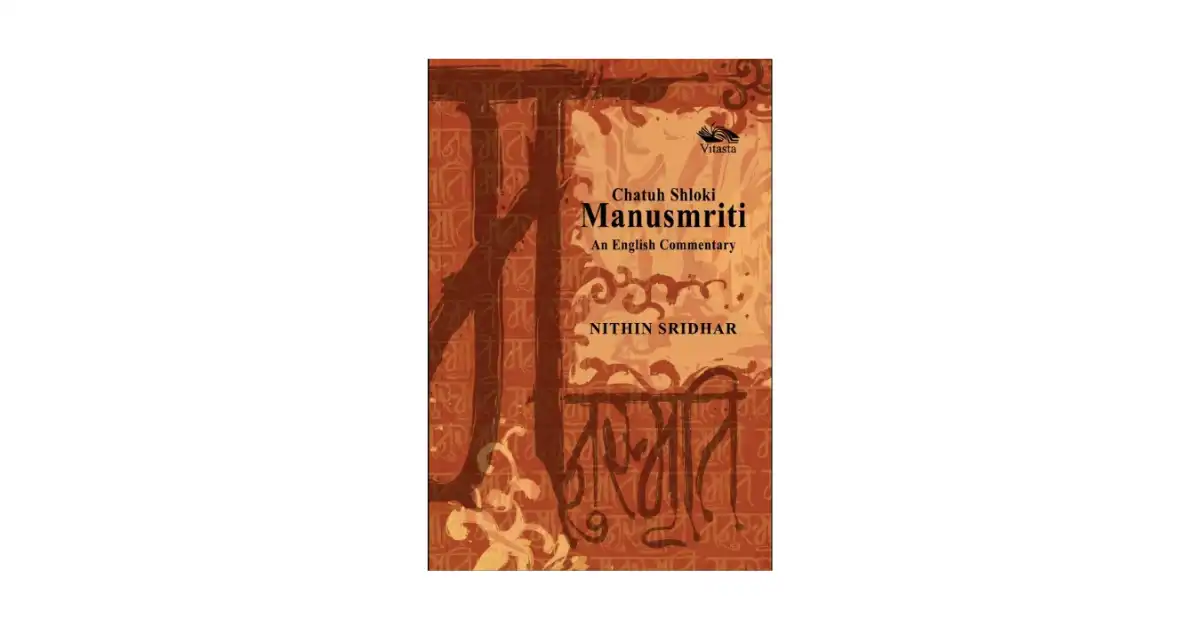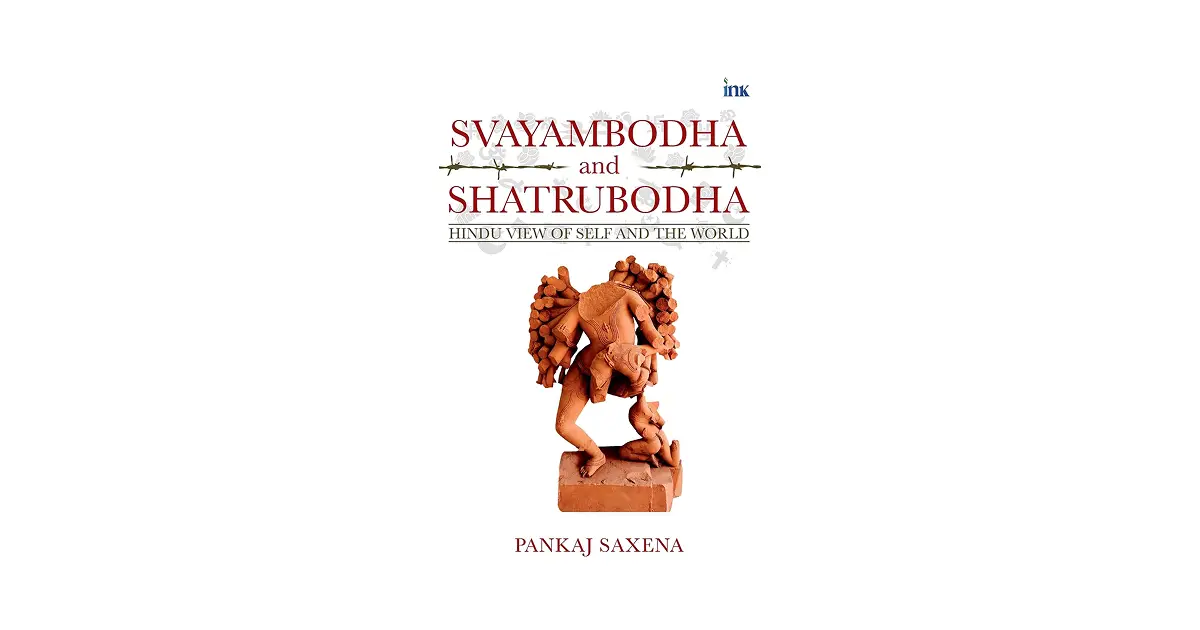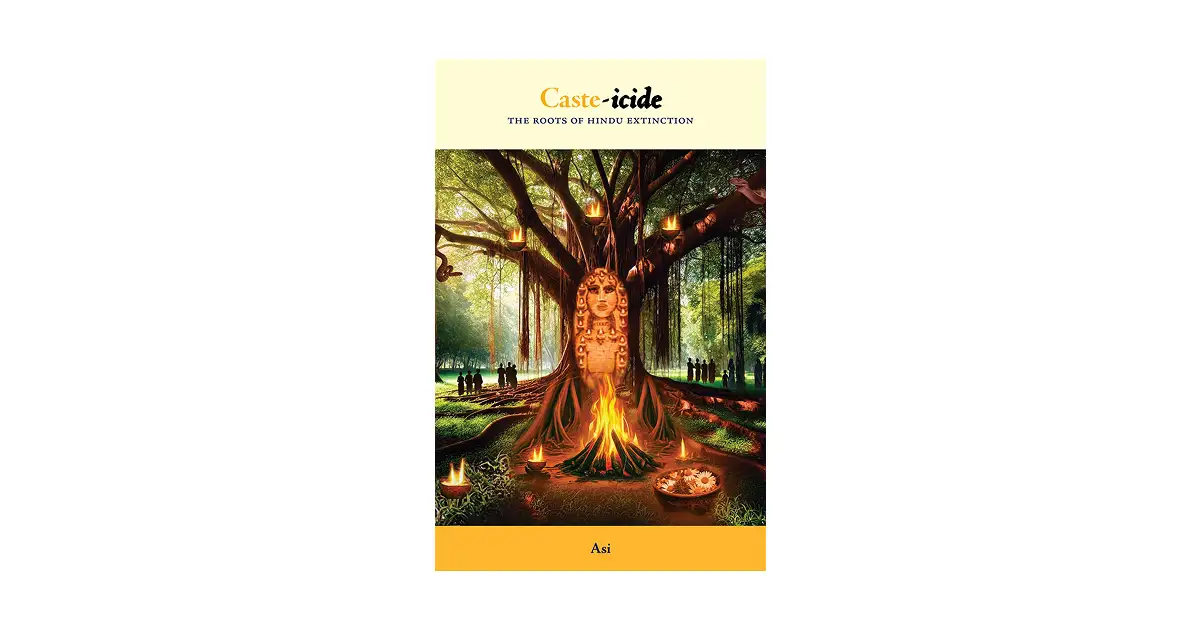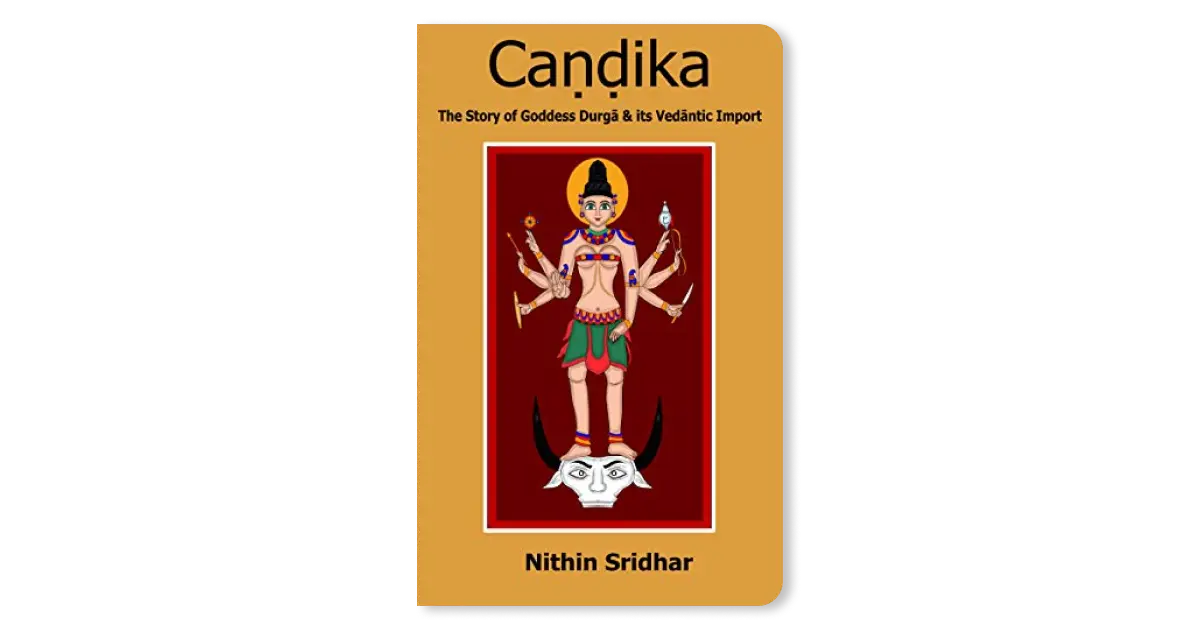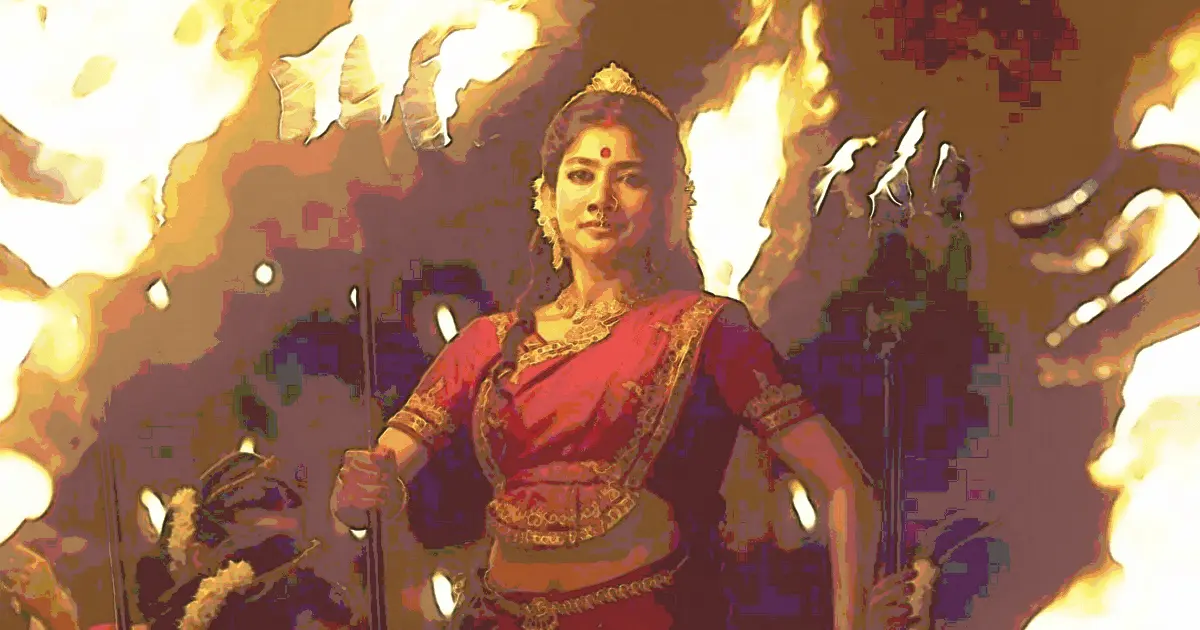Obeisance to that Manu of righteous (dhārmika) speech, scholar of the essence of the Vedas, knower of the core of law, foremost teacher to the ancient sages, benefactor to the world, and protector of all actions enshrined in the system of Varnasramas.
stutiḥ dedicated to Svāyambhuva Manu by Śrī Kushagra Aniket
In Chatuh Shloki Manusmriti: An English Commentary, Nithin Sridhar undertakes a critical and constructive engagement with the dharmaśāstra tradition, positioning his work within the broader contemporary efforts to revive Indic knowledge systems and refute some of the negativity surrounding the Manusmṛti. The foreword to the book articulates a central concern: while there is a growing recognition of the need to develop an Indic drṣṭi - a native hermeneutical lens - across disciplines, the dharmaśāstras remain conspicuously marginalized in both academic and public discourse. Questions of profound socio-cultural and ethical significance - such as the permissibility of abortion, the legal age of marriage, or the status of same-sex unions - are increasingly adjudicated through normative frameworks imported from Euro-American legal and philosophical traditions, with little or no reference to India’s own civilizational resources. Moreover, Sridhar is cognizant of the formidable obstacles that confront any attempt to revive serious engagement with these texts - ranging from the legacy of colonial representations, to modern ideological hostility and widespread unfamiliarity with the language, idiom, and interpretive frameworks of traditional Sanskritic scholarship. In this context, the book serves as a primer intended to clarify common misconceptions, address foundational questions regarding the nature and authority of smṛti literature, and orient the reader to the intellectual architecture of the dharmaśāstra tradition - serving as an introduction, not only into the larger dharmaśāstra corpus but also the traditional framework employed to engage with these texts. Sridhar’s intervention is thus premised on the necessity of reinvigorating the position of dharmaśāstra texts in contemporary discussions on dharma, ethics, and critically, in the fields of law and governance. By foregrounding the need to restore familiarity with both the content and the conventions of dharmaśāstra literature, the author makes a case for civilizational continuity - enabling a more nuanced and less polemical engagement with a corpus of texts that are much-maligned in modern discourse.
Coming to the most distinctive methodological choice made by Sridhar: his decision to limit his direct commentary to the first four verses of the Manusmṛti. Though this may appear to narrow its scope, it is, in fact, a deeply traditional strategy rooted in classical pedagogy. This focus on the first four ślokas of a text, catuśloki closely resembles the catussūtrī (first four sūtras) of the Brahma Sūtras, which are said to encapsulate the entirety of the Brahma Sūtras. The importance of this tradition still holds good in contemporary times: even today, the study of the Brahma Sūtras begins with the study of Bhāmatī catussūtrī, *simply known as Bhāmatī*, which is a commentary on Śaṅkara's commentary on the first four of the Brahma Sūtras, authored by Vācaspati Miśra. Therefore, there is a vibrant tradition wherein scholars will exegete only the initial verses of śāstrika texts, which are rarely casual or introductory in the modern sense; rather, they are carefully crafted to encapsulate the core conceptual architecture and philosophy of the entire text. Sridhar unpacks each term in these verses to map out the text’s core ideas and conceptual framework, engaging with nearly all the fundamental categories, assumptions, and concerns that populate the entirety of the Manusmṛti.
The catuḥ śloki approach therefore mirrors the classical śāstrika pedagogy, wherein a few key verses—more often than not the opening ones—serve as condensed loci of meaning through which the student is led into the deeper structure of the text. In adopting this method, Sridhar not only aligns his work with the śāstrika mode of teaching and commentary but also revives an interpretive discipline that has been largely eclipsed in modern academic and popular readings of dhārmika texts. Though formally limited to four verses, through an expansive exegesis its reach is able to extend to the larger ethical and metaphysical universe of the Manusmṛti, creating a coherent and philosophically grounded discourse on dharma.
A particularly insightful demonstration of this is Sridhar’s discussion that follows his commentary of Verse Two. Though initially framed as a contextual exposition for a single verse, the discussion unfolds into a wide-ranging reflection on the foundational worldview of the Manusmṛti. Sridhar uses the verse as a springboard to clarify that Manusmṛti does not envision a utopian, egalitarian social order in the modern liberal sense. Instead, it is rooted in a realist understanding of human diversity - diversity in temperament, capacity, ethical disposition, life circumstances, and most crucially, in karmic inheritance. Rather than seeking to erase these differences, the text embraces them, offering frameworks through which individuals may pursue their svadharma and the four puruṣārthas, thereby advancing both individual and collective wellbeing. The dhārmika worldview reorients our understanding of what modern discourse labels as “inequity”: the goal of society is not to enforce artificial sameness, but to facilitate an environment where every individual, guided by their unique svabhāva, can progress meaningfully toward liberation. The deeper message of the verse, as the chapter concludes, is this: whether we engage these texts for wisdom or for mockery is our choice, but their validity stands rooted in intrinsic truth, not contingent acceptance. Thus, a single verse becomes the gateway for a rich and expansive meditation on dharma, karma, justice, and the enduring relevance of śāstrika knowledge.
In this way, a central contribution of Sridhar’s commentary is its reframing of dharma as a comprehensive and integrative vision rather than a narrow set of prescriptive rules.
Dharma is not reducible to social custom or legal injunction alone, as superficial readings of the Manusmṛti may suggest; rather, it encompasses cosmology, ontology, ethics, and the teleological structure of human life. By situating dharma within the broader puruṣārtha framework, the book underscores that the Manusmṛti is concerned not merely with dictating the law, but with guiding individuals and society toward a life of harmony, fulfillment, and ultimate liberation. This holistic framing challenges the reductive readings that treat the text as a primitive legal code, inviting instead an understanding of Manusmṛti as a civilizational document that integrates metaphysical vision with practical governance.
The first chapter, titled “Origination, Transmission, and Authorship of Manusmti: Is the Text a Patchwork or a Careful construction?”, addresses some of the claims made by indologists that the Manusmṛti is full of later interpolations, which in their eyes, affects its legitimacy. Sridhar examines the linguistic structure and internal consistency of the Manusmṛti, and draws evidence from texts such as the Nāradasmṛti to make the case that even if later additions exist, they are not arbitrary: they are fully in line with traditional conventions, and harmonise with the overarching worldview of the Bhṛgu recension/line of transmission, reinforcing a unified schema. He concludes that -
...The pauruṣeya authorship attributed to Svāyambhuva Manu and to Bhṛgu can be understood as evidence for preserved memory about the origination and the transmission of the śāstra, which imparts unitary authorship to the extant text.
The chapter “Place and Function of Dharmaśāstra in Hindu Worldview” discusses the meaning of dharma, śāstra and other relevant considerations such as the basis of Hindu epistemology - pramāṇa, the various darśanas, etc. “Decoding Manusmṛti” takes the discussion on the nature of the text into even greater depth: he states that “understanding of smṛtis as pramāṇa-śāstra is that they reveal knowledge about the causal relationship that exists between karma and karmaphala in both modes of dharma and adharma, and this causal relationship is eternal, unchanging, and beyond the grasp of the mind and the senses.” The chapter ends with the discussion of a particularly controversial verse from the Manusmṛti regarding the independence of women, contrasting the colonial (and my extension, the modern liberal) gaze with the śāstrika dṛṣṭi.
This discussion (along with other portions of the book such as the ‘Appendix I’ that expands on the various facets of varṇa) shows that the book is not mere apologia for the Manusmṛti, but a genuine exegesis that unwaveringly puts forth the śāstrika perspective unabridged. The book makes no qualms about addressing the supposedly uncomfortable portions of the Manusmṛti, adopting an unapologetic and matter-of-fact tone that resists both the impulse to whitewash and the tendency to offer defensive, conciliatory explanations. The Manusmṛti is erroneously understood as a book of theocratic commandments. Rather, it is a pramāṇa-śāstra - a source of valid knowledge about the moral and spiritual consequences of human action to be drawn from by rulers, which endures the test of time irrespective of public approval or disapproval. Sridhar pinpoints that contemporary Hindu discomfort with the Manusmṛti and other dharmaśāstras stems less from the content of the texts themselves and more from a deep disconnection with the traditional dhārmika knowledge systems - an estrangement largely accelerated by colonial disruption and the perils of modernity. This alienation need not be seen as fatalistic; it is possible to re-establish civilizational continuity through proper understanding, interpretation, and application of dharma using indigenous tools and frameworks.
In the commentary to Verse Four is embedded an extraordinarily compelling insight: the elucidation of a multi-layered narrative architecture embedded within the first four verses of the Manusmṛti, which, Sridhar shows, mirrors the cyclical nature of the cosmos itself. Drawing on Patrick Olivelle’s analysis, the text is shown to unfold across five tiers of transmission - each a moment of telling, hearing, and retelling - beginning with Brahmā’s revelation to Manu, and culminating in the present reader. This deliberate layering is not merely stylistic; it symbolically replicates the cycle of creation and dissolution, thereby embedding dharma within a cosmogenic framework. In doing so, the text aims to shift the reader’s gaze away from a linear, anthropocentric view of history and toward a cosmological perspective that affirms harmony, order, and transcendence as the proper vantage points for understanding dharma.
With his commentary, Nithin Sridhar has arguably forged a new genre of śāstra-related literature, one that defies conventional classificatory boundaries. It is neither fully traditional, given its medium of expression in English, nor fully modern, as it consciously resists the epistemic frameworks and normative assumptions that cloud modern liberal discourse. Instead, it operates within a strictly śāstrika paradigm, maintaining fidelity to the internal logic, terminology, and axioms of the dhārmika tradition. The work does not cater exclusively to the academic scholar, nor does it speak solely to the uninitiated lay reader; rather, it occupies a liminal space between the two. For instance, the chapter “Decoding Manusmṛti: Some Pointers to Make Sense of Dharmaśāstra Texts” bridges a crucial gap, bringing the śāstra and its many rules, assumptions and nuances closer to the culturally deracinated yet intellectually curious Hindu.
Those interested in purchasing a copy of the book may do so here.
